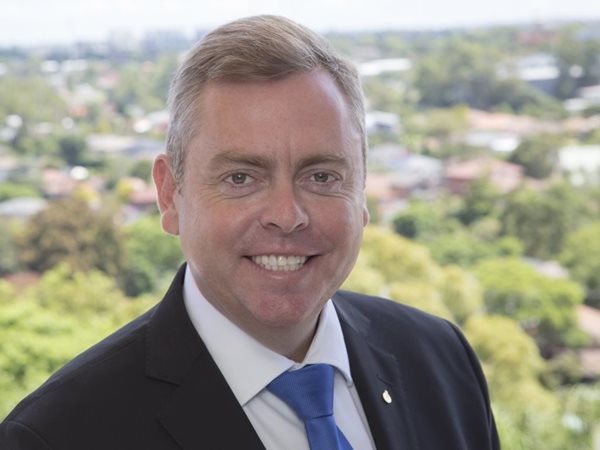The NSW Government’s proposed Design and Place State Environmental Planning Policy (SEPP) has been dragged into the spotlight once again, with the government feeling the pressure from property developers to ditch the proposal in its entirety.
Emails obtained by the Sydney Morning Herald indicate the Urban Taskforce, comprising a number of property developers and equity financiers, have been lobbying against the policy that was floated by former Planning Minister Rob Stokes and NSW Government Architect Abbie Galvin (pictured top). The SEPP put forward by Stokes and Galvin was designed to reduce emissions and promote sustainable design, in a bid to drive down the state’s emissions and mitigate the risks of climate change and the urban heat island effect.
Anthony Roberts (pictured below), who replaced Stokes, told developers at an Urban Taskforce event in April that he had opted to scrap the proposal. Given the NSW Government’s recent track record, a la Barilaro and Ayres, the government’s willingness to bow to external pressure is becoming an extreme concern, especially in the lead up to an election.

The Urban Taskforce views the proposal as unworkable. Given that it is made up entirely of property developers concerned about their profit margins, it hardly comes as a surprise. In an email to Planning Department Deputy Secretary, Brett Whitworth, Galvin outlays her concerns about the group pushing its agenda.
“I think it is really critical that they are not given priority treatment simply because they have the loudest voice,” she writes.
Urban Taskforce Chief Executive Tom Forrest’s position regarding the SEPP is made clear in meeting notes from a sit-down between the exec and Whitworth back in April. Forrest was noted as saying that “architects shouldn’t have a role in planning.” In an email to Whitworth and fellow Deputy Secretary Marcus Ray, Forrest writes that the “overwhelming view of the property construction and development industry is that the Design and Place SEPP should be entirely scrapped,” with the likes of the Property Council of Australia and the Housing Industry Association named as being opposed to the SEPP.
Roberts’ inclination to side with the Taskforce is a concern which is felt in the highest levels of government. Galvin writes in an email to Whitworth that she was told by a Ministerial Adviser that the new Planning Minister “didn’t have a great reputation when it came to climate,” which the government believes requires attention.
Given the way Rob Stokes was shunted in late 2021 in favour of Roberts, fingers must now be pointed at Premier Dominic Perrottet. Stokes’ urban design background and inclination to create climate-conscious policy was clear during his time as the Minister for Planning and Public Spaces. Given Roberts’ position on the proposed SEPP and the admissions by the government that the Minister's stance on climate is poor, it's becoming clear that the reshuffle was a step backwards.
“This SEPP was the result of years of hard work by experts, including within the planning department, to make NSW more sustainable and climate resilient, and now we’re back to square one,” Greens MP Cate Faehrmann tells the Herald.
Roberts was allegedly told by Premier Perrottet to focus on issues of housing supply and affordability, with sustainability to take a backseat. A Spokeswoman for the Premier believes the updates made to the Building Sustainability Index (BASIX) is enough to suffice.
“(Roberts) will continue to develop elements of the Design and Place SEPP which support sustainable supply of housing that helps NSW meet its targets for reducing greenhouse gas emissions.”
The Design and Place SEPP now sits in a state of limbo. While housing supply and affordability is absolutely the genuine concern across both New South Wales and Australia, it remains imperative that the government implements policies that reduce carbon emissions in the built environment.

